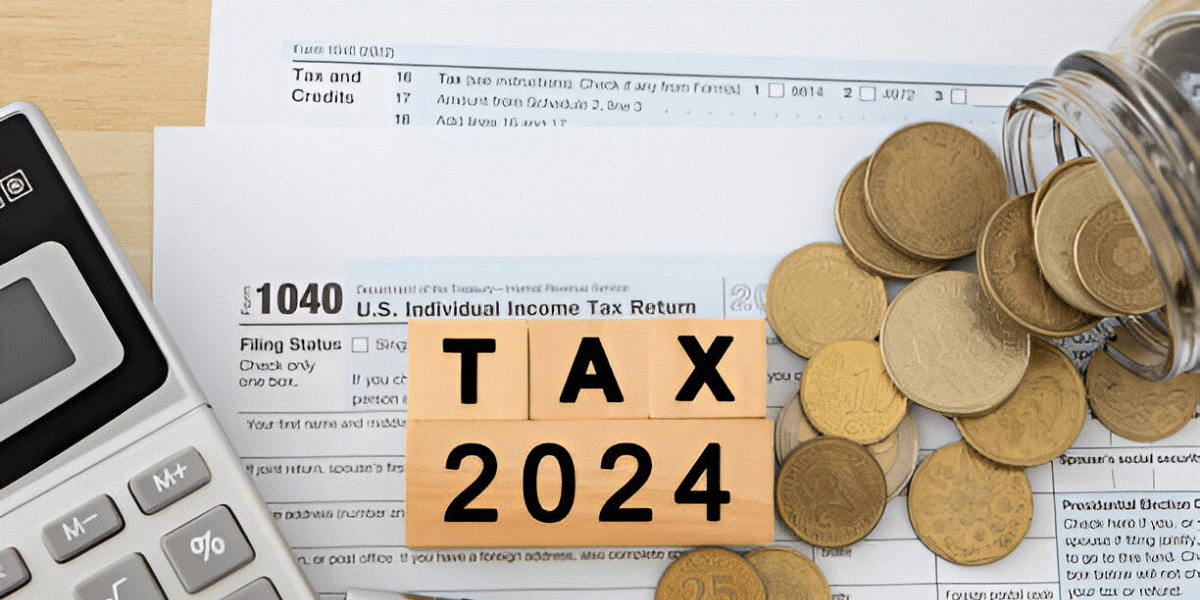Everything You Need To Know About Fringe Benefits Tax
When your employer offers fringe benefits, it's a win-win situation for you. Not only do you enjoy these additional perks, but depending on your personal circumstances, you might also find it advantageous to decrease your taxable income.
Here's how it works: your employer pays the Fringe Benefits Tax (FBT) on the benefits you receive. However, to fully understand and stay informed about this whole process, it's crucial to know the necessary information about fringe benefits and FBT.
What Is Fringe Benefits Tax?
Fringe Benefits Tax (FBT) is a taxation system applicable in several countries, including Australia, which requires employers to pay tax on certain non-wage benefits provided to their employees or associates. These benefits could include perks such as company cars, housing allowances, health insurance, and entertainment expenses.
It's important to note that FBT is distinct from income tax. While income tax is imposed on an individual's earnings, FBT targets the value of non-monetary benefits provided by an employer.
Employers are responsible for self-assessing their FBT liability for each FBT year, which runs from April 1st to March 31st in Australia. If an employer determines that they have an FBT liability, they must lodge an FBT return with the appropriate tax authority and pay the FBT owed.
Calculation Of Fringe Benefit Taxes
The taxable value of the fringe benefit is the key factor in calculating FBT. This value is generally determined by specific rules and formulas set by tax authorities, considering various factors such as the type of benefit provided and the recipient's circumstances.
FBT compliance requires thorough record-keeping and an understanding of the relevant tax laws and regulations. Employers often seek professional advice or use specialised software to provide accurate reporting and comply with FBT obligations.
By fulfilling their FBT obligations, employers contribute to the broader tax revenue that supports various government programs and services. Proper compliance also helps maintain transparency and fairness in the taxation system.
A Fringe Benefit
What's included?
A fringe benefit is an alternative form of compensation for employees distinct from their regular salary or wages. It encompasses various non-monetary perks employers provide, offering additional value beyond the standard pay cheque.
Examples of fringe benefits span a diverse range, including:
1. Allowing personal use of a company vehicle:
This entails permitting employees to utilise a work-provided vehicle for personal purposes, such as commuting or running errands outside work hours.
2. Car parking:
Providing designated parking spaces for employees, whether on-site or in nearby facilities, can be considered a fringe benefit.
3. Covering gym memberships:
Employers may offer to pay for or subsidise gym memberships for their employees, promoting health and wellness initiatives.
4. Entertainment benefits:
This includes offering complimentary tickets or access to concerts, sports games, or cultural performances.
5. Reimbursement of expenses:
Employers may reimburse certain expenses employees incur, such as travel expenses, educational fees or professional development courses, as part of their fringe benefit offerings.
6. Discounted loans:
Providing employees with loans at preferential interest rates or with reduced fees is another form of fringe benefit.
7. Salary sacrifice arrangements:
Through salary sacrifice agreements, employees may opt to receive certain benefits, such as additional superannuation contributions, childcare vouchers, or technology devices, in lieu of a portion of their salary.
What's not included?
It's important to note that not all forms of compensation fall under the category of fringe benefits. Here are several examples of what does not constitute fringe benefits:
1. Salary and wages:
These are the standard payments made by employers to employees in exchange for their work and services rendered.
2. Employer contributions to complying super funds:
Employers are required by law to contribute to their employees' superannuation (retirement savings) accounts.
3. Shares or rights provided under approved employee share acquisition schemes:
Certain schemes allow employees to acquire shares or rights in their company, often as part of incentive programs or stock options.
4. Employment termination payments:
This includes various payments made to employees upon termination of their employment, such as redundancy payments or severance packages. It's worth noting that certain termination payments, like the gift or sale of a company car at a discount, are excluded from being considered fringe benefits.
5. Payments deemed to be dividends under Division 7A:
Division 7A of the Australian tax law addresses payments or loans made by private companies to shareholders or associates, which may be treated as dividends for tax purposes.
6. Benefits provided to volunteers and contractors:
Fringe benefits typically apply to employees, not volunteers or independent contractors, who are not considered regular employees.
7. Exempt benefits:
Some benefits are not subject to fringe benefits tax (FBT) under specific circumstances. For instance, certain benefits provided by religious institutions to their religious practitioners may be exempt from FBT.
Who Is Eligible To Receive Fringe Benefits Tax?
Fringe benefits are typically received by employees, as well as their families or other associates. Here's who qualifies to receive fringe benefits for the purpose of Fringe Benefits Tax (FBT):
1. Employees:
This category encompasses current, future, or past employees of an organisation. It includes individuals who work under an employment contract, regardless of whether they are full-time, part-time, casual, or temporary employees.
2. Directors of a company:
Directors who receive benefits from the company they serve are also considered recipients of fringe benefits. This includes executive and non-executive directors.
3. Beneficiaries of a trust who work in the business:
If a trust has beneficiaries who are actively involved in the operations of the business, any fringe benefits provided to them are subject to FBT.
Also, note that individuals operating as sole traders or partners within a partnership are not considered employees for FBT purposes. Therefore, any benefits they provide to themselves are not subject to FBT. Similarly, clients or customers of a business are not considered employees, so any benefits provided to them, such as entertainment or gifts, are not subject to FBT either.
Understanding who qualifies as a recipient of fringe benefits helps employers accurately assess their FBT obligations and ensure compliance with tax regulations.
How Much Amount Is Payable For FBT?
To determine the amount of Fringe Benefits Tax (FBT) owed, employers engage in a process known as "grossing up" the taxable value of the fringe benefits provided to employees. This involves determining the gross income employees would have to earn at the highest tax rate to buy the benefits on their own.
The FBT payable by the employer is then 47% of this grossed-up value of the fringe benefits. This rate ensures that the tax liability appropriately reflects the value of the benefits provided.
● For instance, if the taxable value of the fringe benefits, after grossing up, amounts to $10,000, the FBT payable would be $4,700 (47% of $10,000).
By employing this calculation method, employers can accurately determine their FBT obligations and fulfil their tax responsibilities in accordance with regulatory requirements.
Frequently Asked Questions
Q1: Can I claim deductions and GST credits?
As an employer, you can claim tax deductions for the costs associated with providing fringe benefits to your employees. If you're eligible to claim Goods and Services Tax (GST) credits, you can deduct the GST-exclusive amount from your income tax. If not, you can deduct the full cost of the fringe benefits. Additionally, you can claim an income tax deduction for the Fringe Benefits Tax (FBT) you're obligated to pay, helping to mitigate the overall tax impact of providing fringe benefits to your workforce.
Q2: How do fringe benefits reduce my tax?
Sometimes, fringe benefits are provided to you through salary sacrifice within a salary packaging plan. This could potentially lower your tax bracket, which is beneficial, especially if you're a high-income earner.
Q3: Why is my company offering fringe benefits?
Your company offers fringe benefits to gain a competitive edge in attracting, retaining, and motivating employees. Fringe benefits such as free food, coffee bars, discounted gym memberships, and entertainment contribute to creating a workplace where employees feel valued and happier. While not all of these perks are subject to Fringe Benefits Tax (FBT), they are vital for promoting a positive work culture and boosting employee satisfaction, benefiting both the company and its workforce.
Q4: Could you explain what a Reportable Fringe Benefits Amount (RFBA) is?
If the cumulative taxable value of fringe benefits provided to you and/or your family during a Fringe Benefits Tax (FBT) year surpasses $2,000, there will be a reportable fringe benefits amount reflected in your end-of-year income statement, previously known as a payment summary. This reportable fringe benefits amount is a disclosure of the total value of fringe benefits received, which may impact your overall income and taxation obligations.
Recap - Everything You Need To Know About Fringe Benefits Tax
Let's recap everything you need to know about fringe benefits tax (FBT). Fringe benefits are the additional perks provided by your employer, separate from your regular salary. Your employer is responsible for paying the tax on these non-wage benefits and perks. Fringe benefits encompass non-monetary benefits, while some monetary benefits are excluded. Eligible recipients of these perks include employees, directors, and beneficiaries. The tax payable on fringe benefits is calculated through a process called grossing up.
If you have any further questions or concerns about tax-related topics, don't hesitate to reach out! Our trusted
tax agents in Sydney is here to provide timely answers and assistance with all your tax-related inquiries.





















